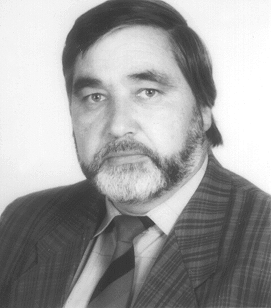
IN MEMORIAM: PROFESSOR VLADIMIR N. DERMENDJIEV

06.11.1943 – 05.01.2001
Professor Vladimir Dermendjiev’s sudden and untimely death on January 5, 2001, brought a great loss to the world of astronomy and to the Institute of Astronomy in Sofia where he worked for many years. Professor Dermendjiev was one of the most prominent scientists at the Institute of Astronomy. He graduated from the University of Sofia in astronomy in 1968. He was especially interested in solar physics in which he got his PhD. He joined the Department of Astronomy in the Bulgarian Academy of Sciences in 1977, and became a full Professor at the Institute of Astronomy in 1996. For a short period of time in 1993, he was the Director of the Institute of Astronomy. From 1995 to 1995, he was the Scientific Secretary of the Institute.
He was the founder of the Solar Department at the Institute of Astronomy and indeed fostered solar physics studies generally in Bulgaria. He published more than 150 papers, mostly in international journals. In recent years he initiated collaborative studies using the SOHO spacecraft and was primarily responsible for the organisation of visits from numerous international teams to Bulgaria on the occasion of the total eclipse of August 11, 1999. Professor Dermendjiev and his collaborators were particularly interested in quiescent and eruptive prominences, white-light flares, proton flares, flare radio emission, plasma dynamics and oscillations in arch-like prominences, and statistical studies of prominences. He carried out theoretical studies of MHD modes along magnetic field lines leading to a possible destabilization of quiescent prominences and of the corona during eclipses. Professor Dermendjiev had a large number of post-graduate students, many of whom are now making their mark in solar physics in their own right, both in Bulgaria and elsewhere.
Professor Dermendjiev organised a number of international collaborations involving colleagues from Poland, Turkey, France, Russia, Romania and many others countries. Together with French colleagues, a model was developed by him in which there are multiple reflections of surface MHD modes in arch prominences. His collaborations with Turkish and Romanian colleagues led to an observational study of eruptive prominences, while those with Polish colleagues resulted in a very successful study of the dynamics of solar prominences and were greatly involved in the SECIS eclipse experiment with Polish and UK astronomers for the 1999 eclipse. Through his active encouragement the 18cm photoheliograph was built at Rozhen National Astronomical Observatory. This telescope has been used for many years to study active regions in white light.
Professor Dermendjiev was a diverse person, particularly interested in history, music, and religion. Exploring a series of archeological sites from ancient astronomical points of view, he made his mark in archeoastronomy.
Professor Dermendjiev had the rare ability to be adept at both experimental and theoretical astronomy. On a human level, he will be sorely missed as a friendly companion as well as a helpful colleague. Those who came into contact with him will remember him for his tremendous warmth of personality. The world of astronomy and most especially solar physics mourns this sad loss.